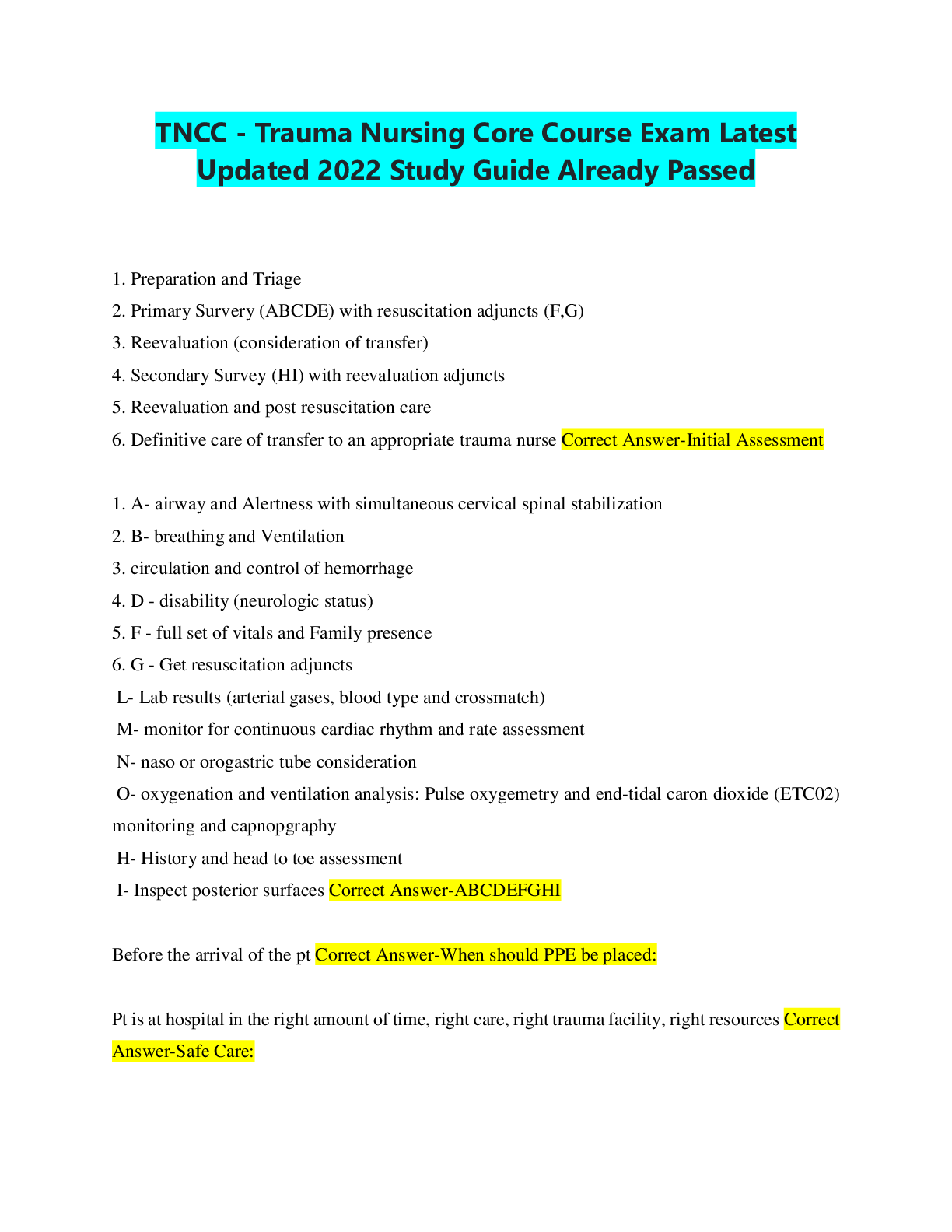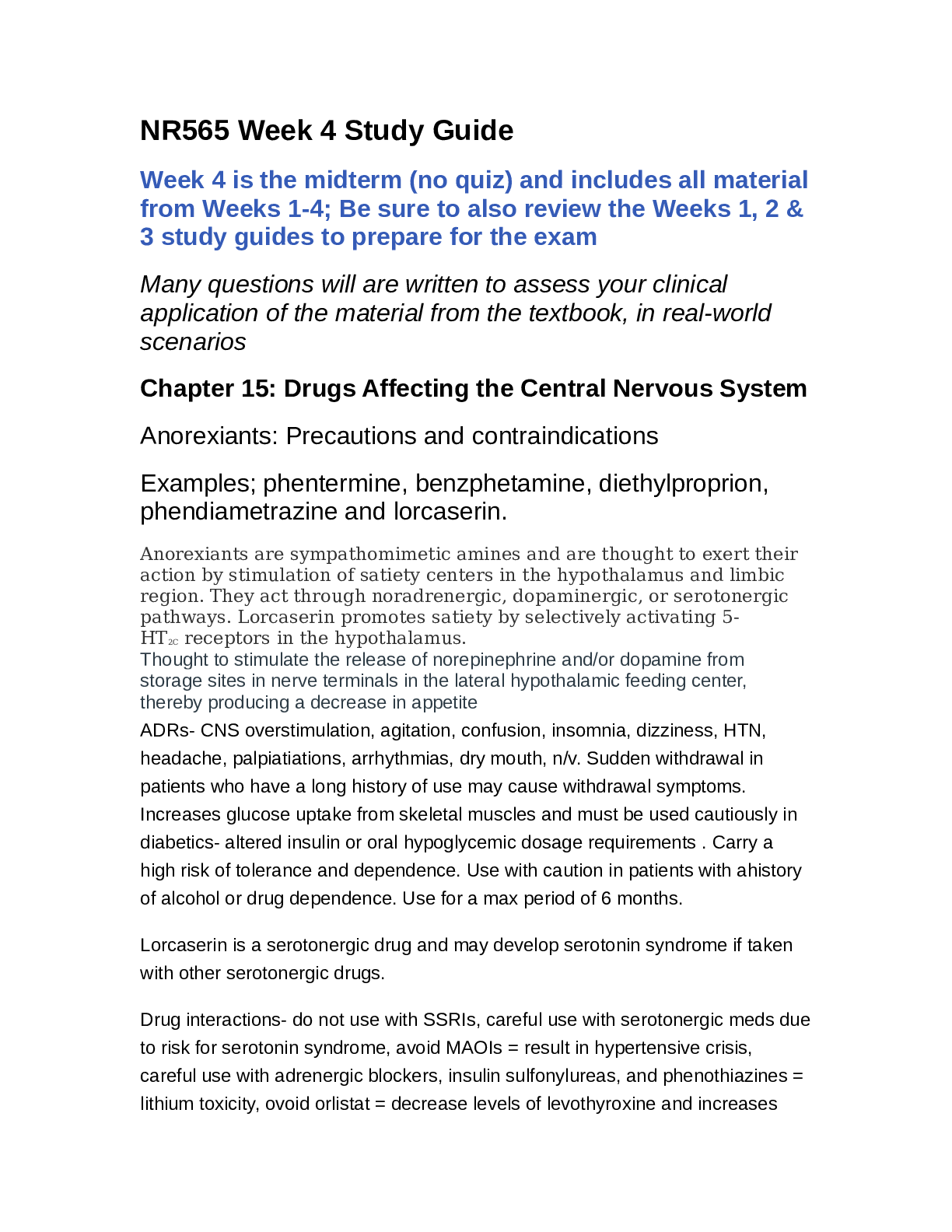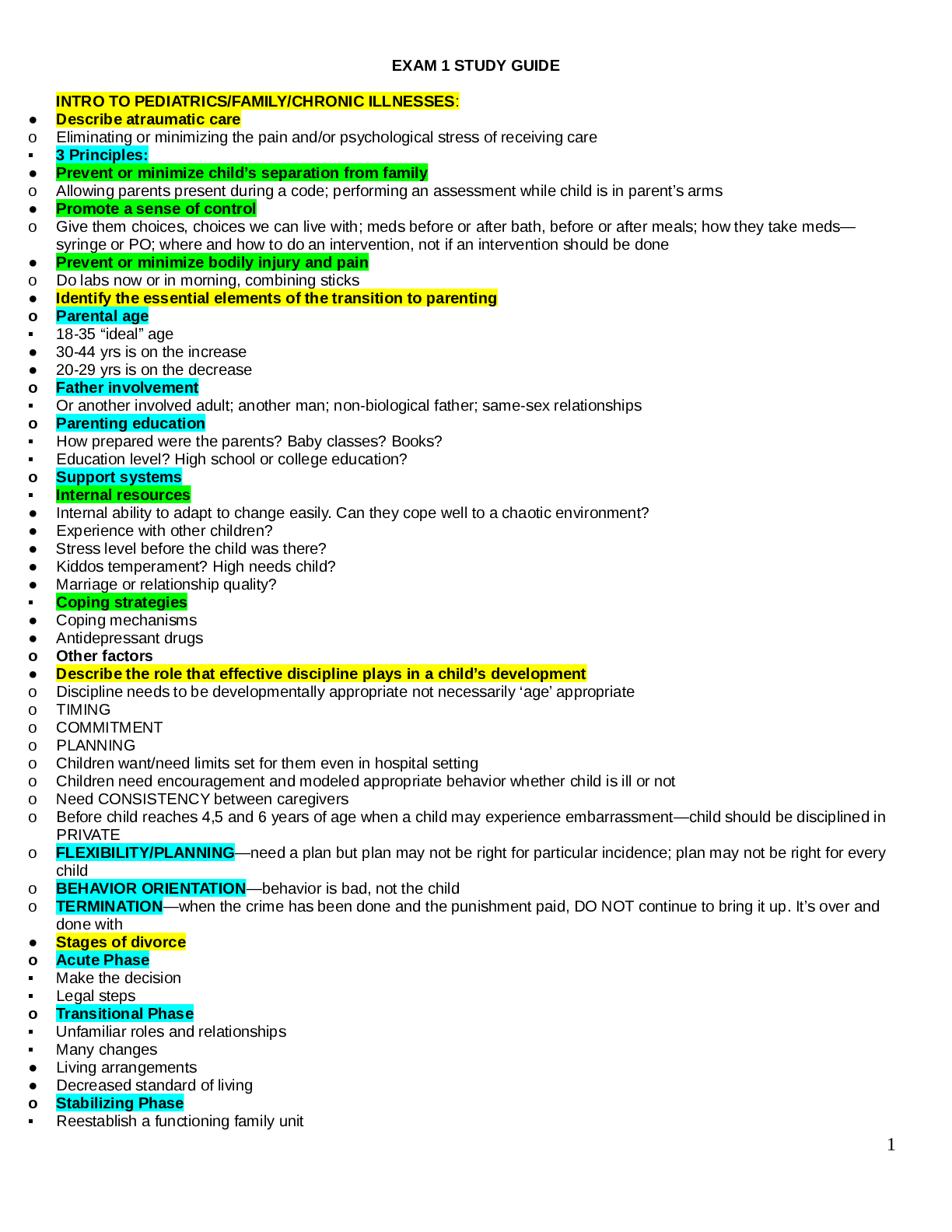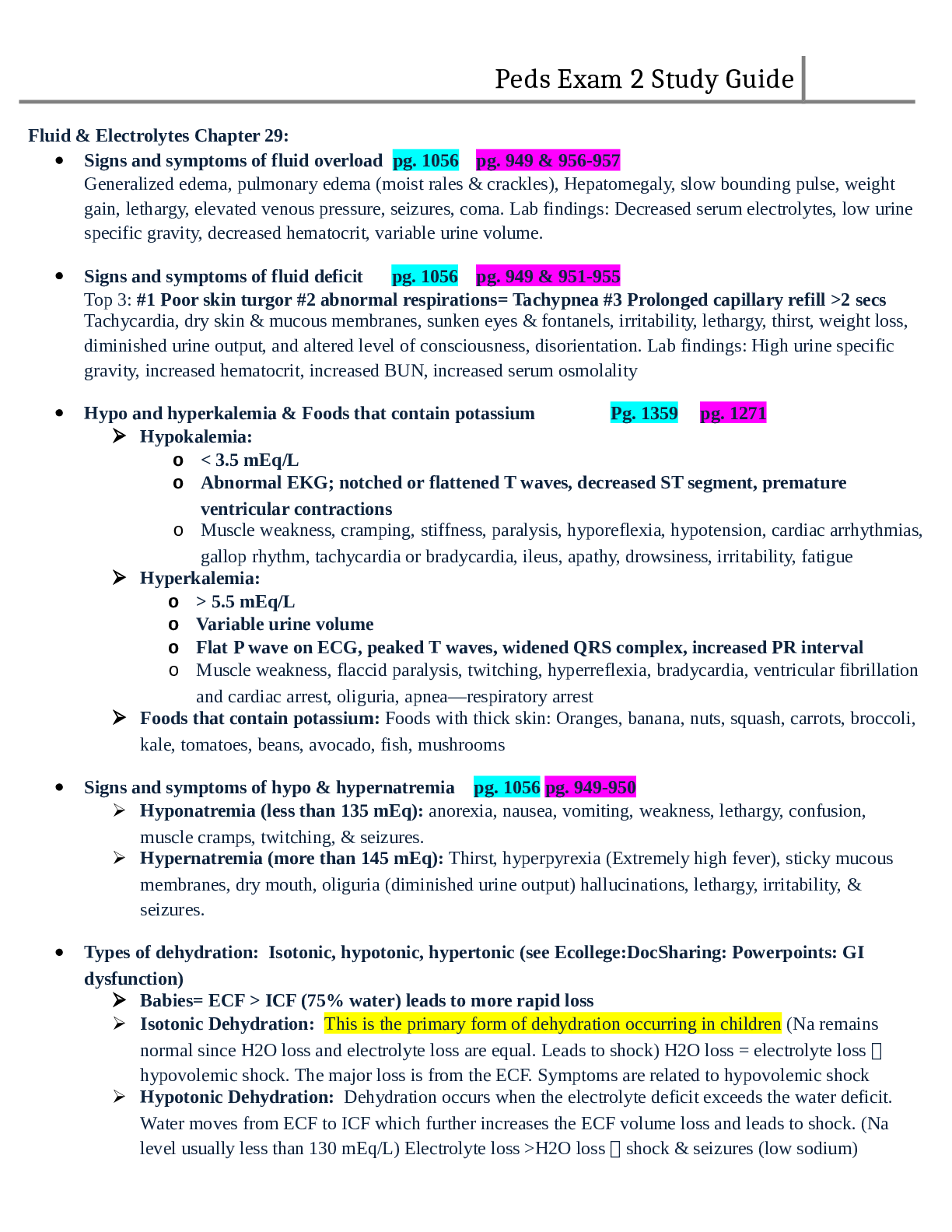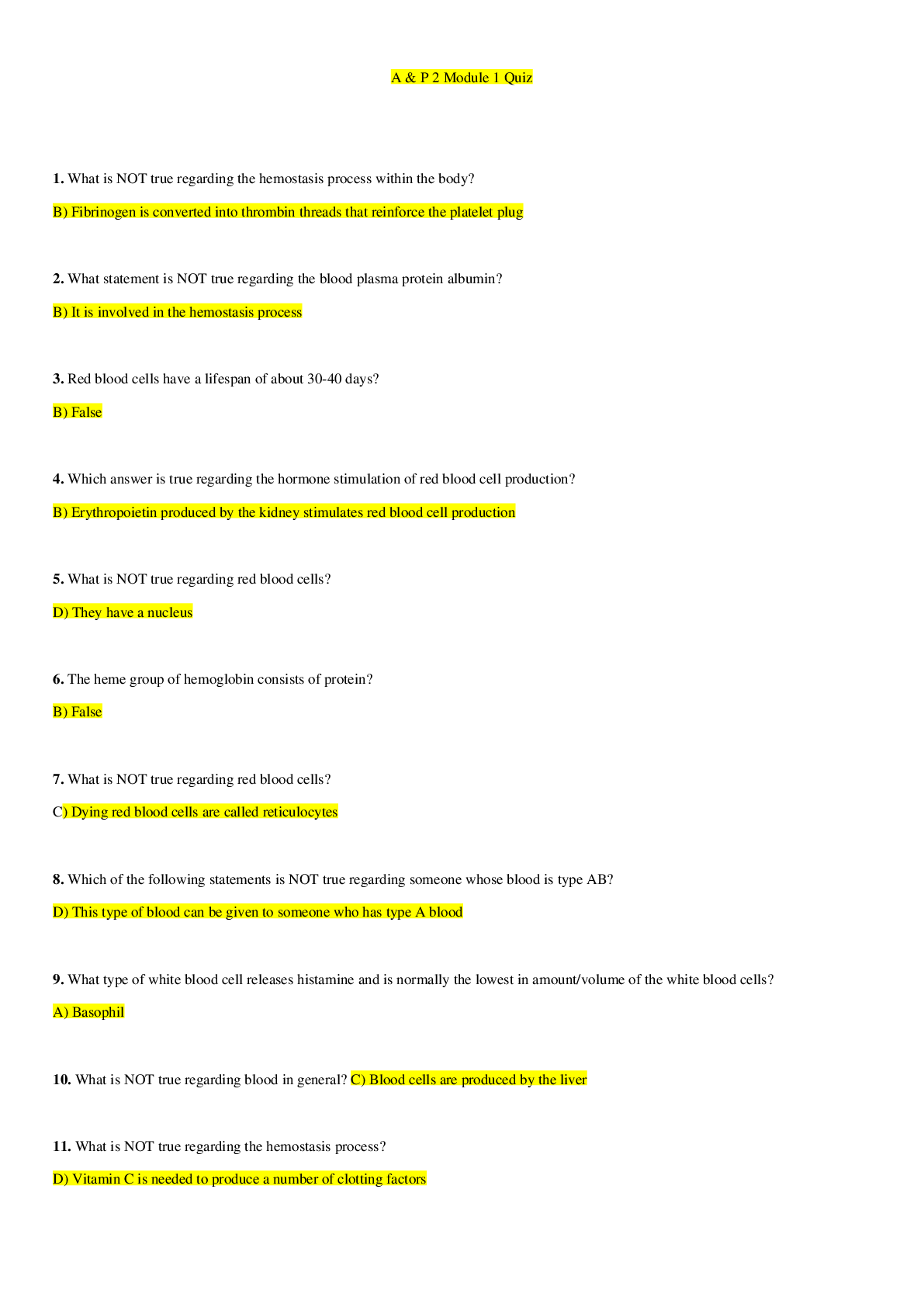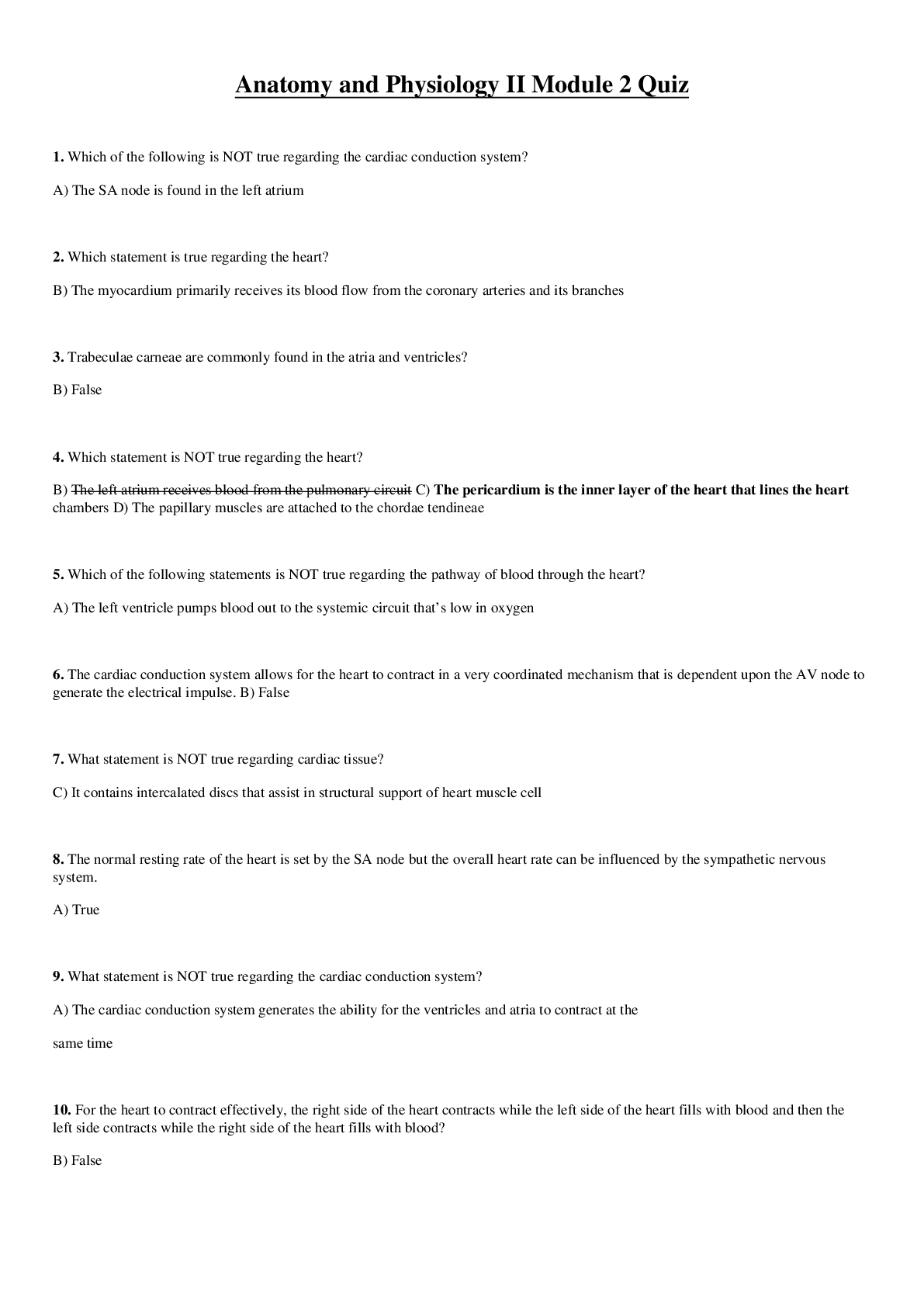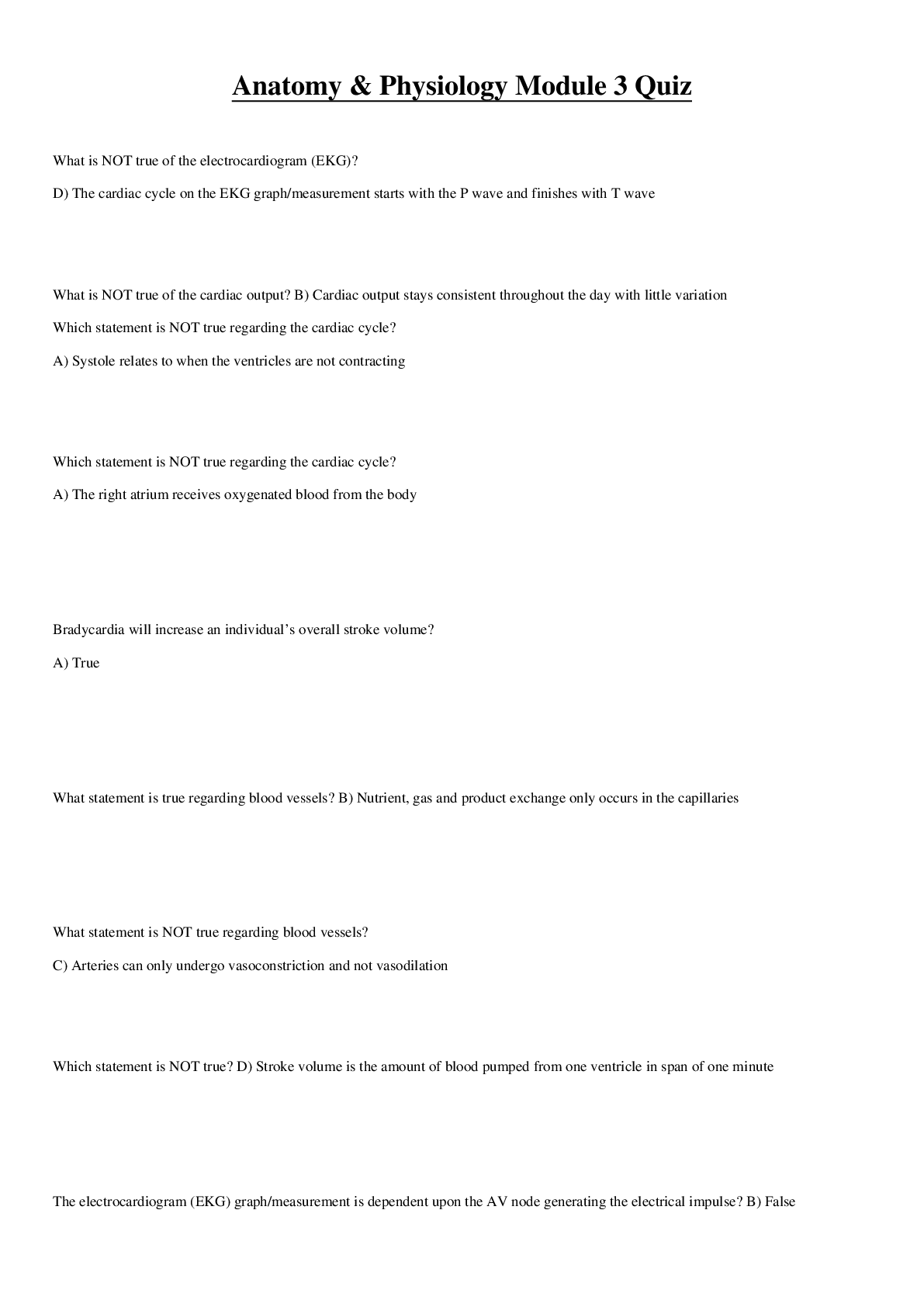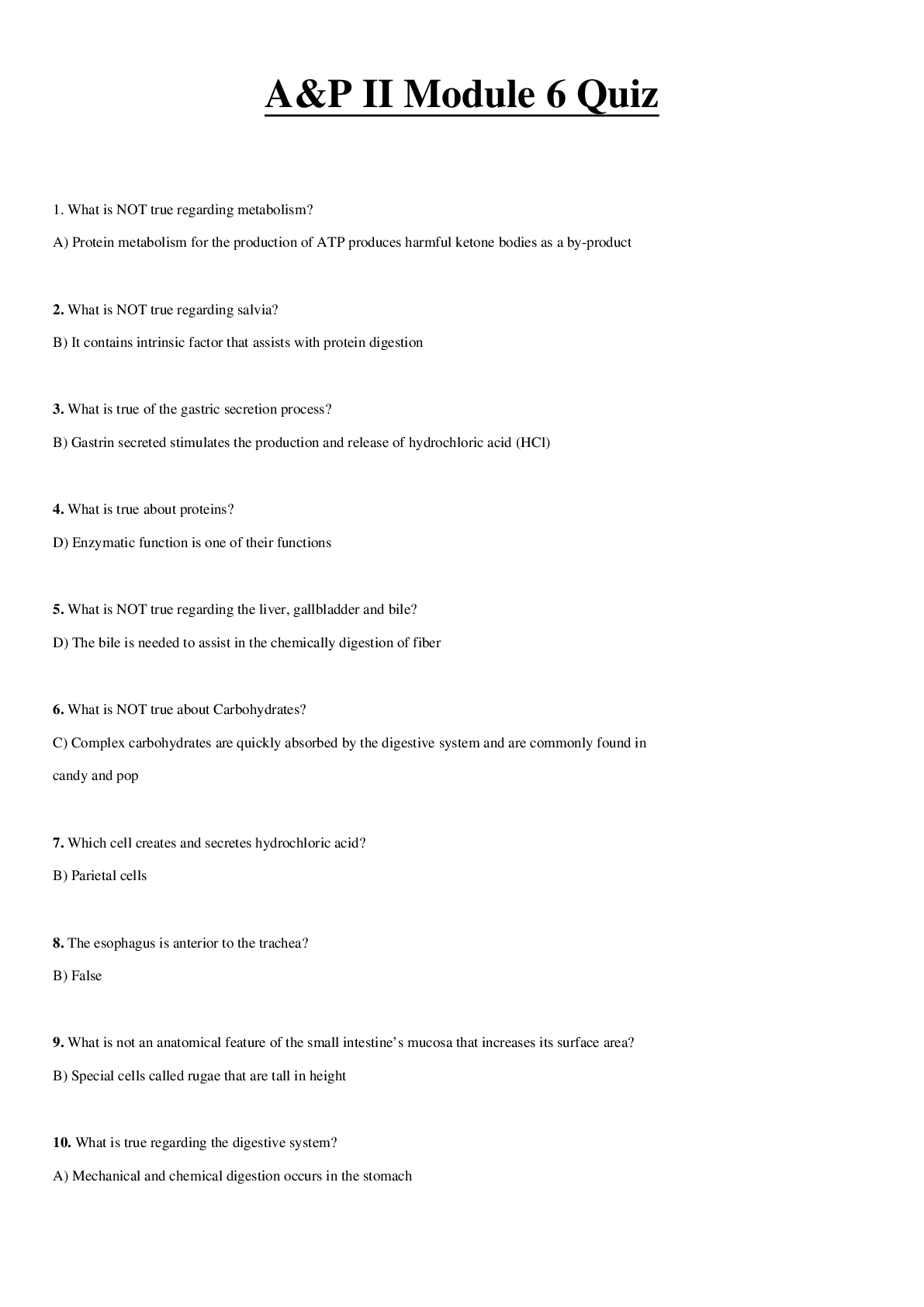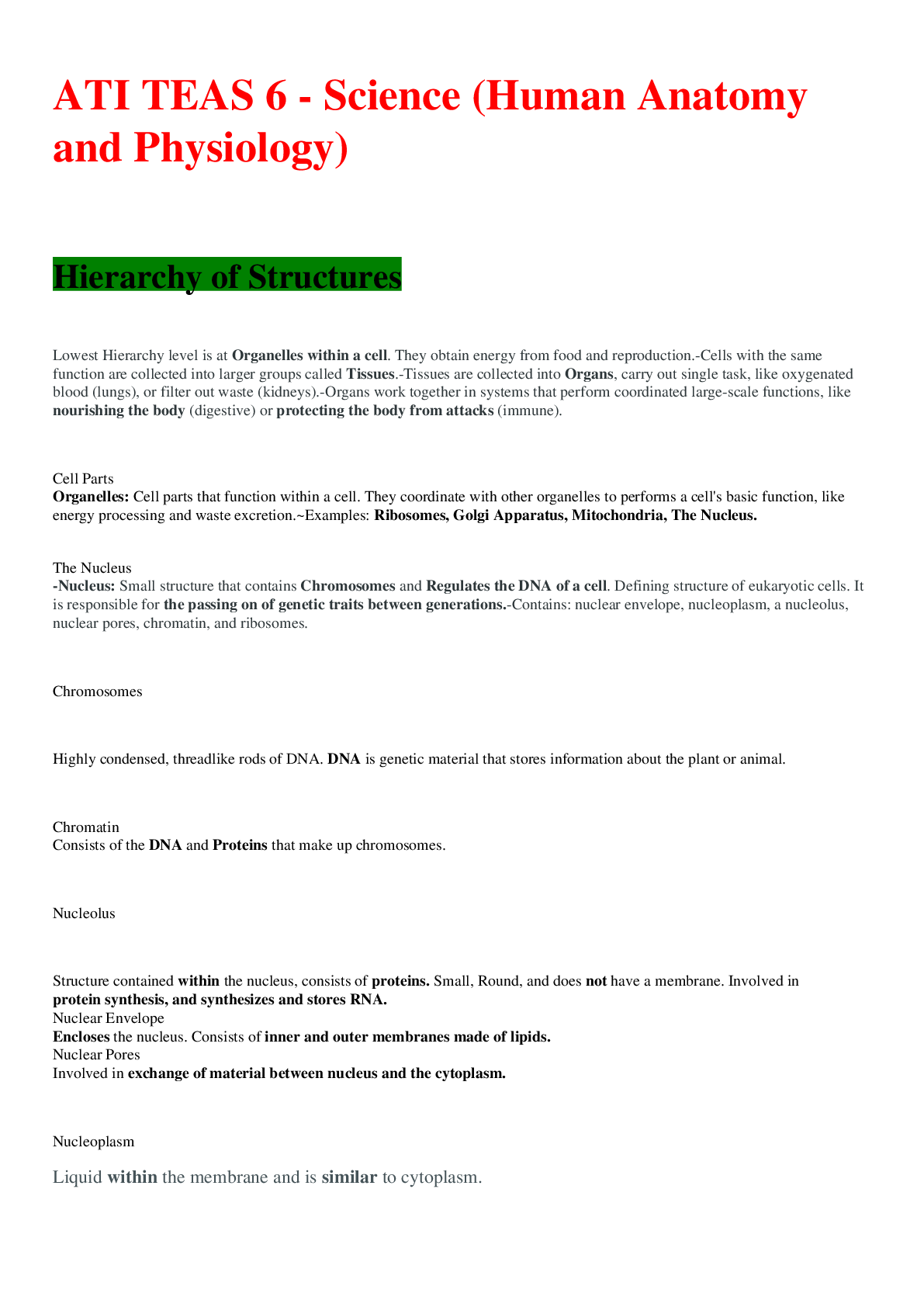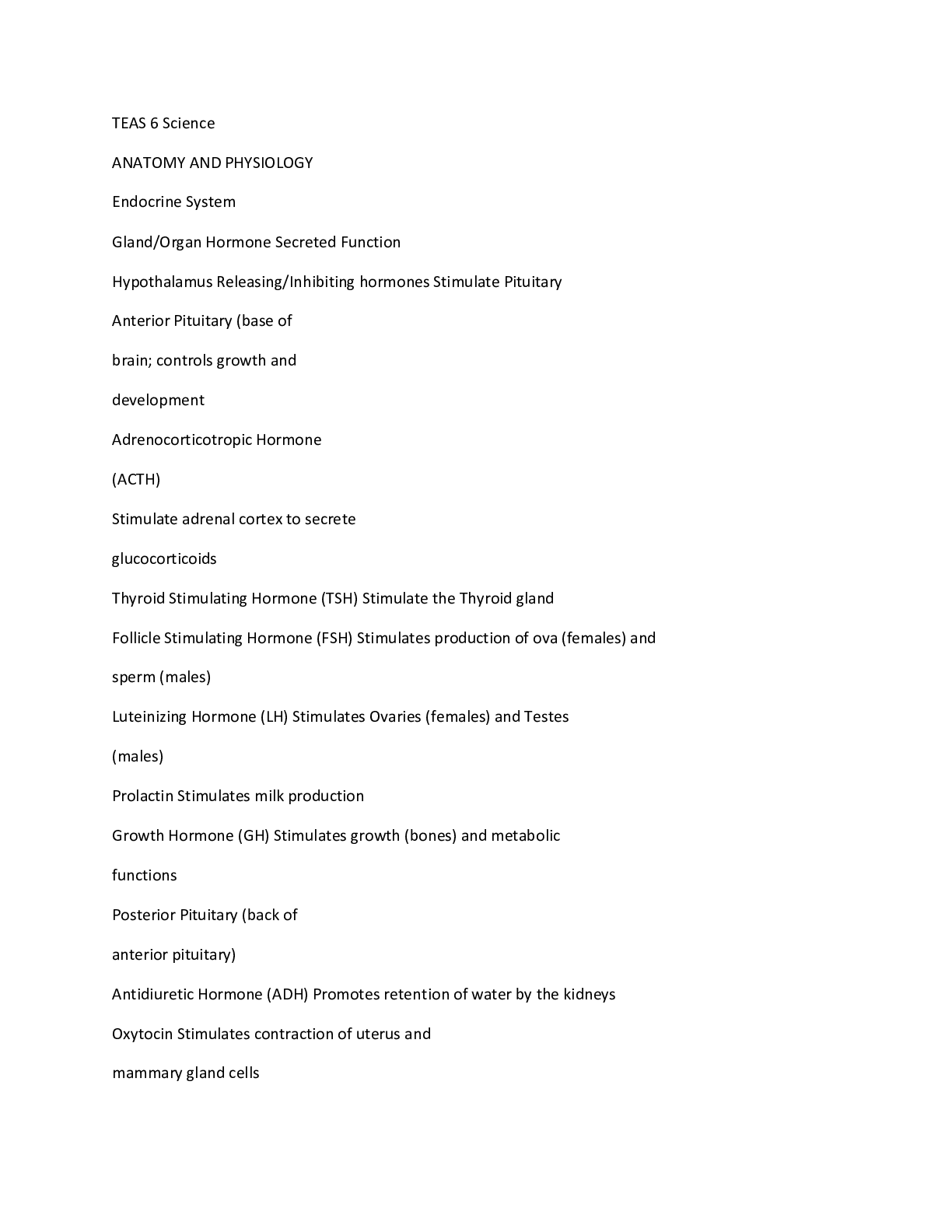*NURSING > STUDY GUIDE > GI System Anatomy and Physiology Best Study Guide Ever (All)
GI System Anatomy and Physiology Best Study Guide Ever
Document Content and Description Below
1. Differentiate between the organs which make up the upper gastrointestinal track and the lower gastrointestinal track. -The GI tract consists of the mouth, esophagus, stomach, small intestine, lar... ge intestine, rectum, and anus. -Upper GI tract - esophagus, stomach and duodenum (upper GI bleeds) -Lower GI tract - jejunum, ileum, colon and rectum (lower GI bleeds) 2. Explain the hepatoportal circulation anatomy and physiology. The hepatic portal vein collects blood from capillaries in visceral structures located in the abdomen and empties into the liver for distribution to the hepatic capillaries. Hepatic veins return blood to the inferior vena cava. 3. Discuss the effects of aging on the gastrointestinal tract. Age related changes in the GI tract begins at age 50 Tooth enamel and dentin wear down→ more vulnerable to cavities Teeth are lost as a result of: o Periodontal (gum) disease o Recession of gums o Osteoporotic bone changes o Brittle roots that fracture easily Taste buds decline in number Sense of smell diminishes Sense of taste decreases Salivary secretion decreases Very old adults→ oral and sensory changes make eating less pleasurable and reduce appetite Food not chewed or lubricated sufficiently→ difficulty swallowing Esophagus develops decreased motility Changes in upper esophageal sphincter (hx of stroke & dementia) affect swallowing and contribute to GERD Gastric motility and volume decreases (secretion of bicarbonate & gastric mucus) Decreased production of intrinsic factor→ inadequate small intestine absorption of vitamin B12 and pernicious anemia Change in composition of the intestinal microflora→ increased susceptibility to disease Intestinal absorption, motility, and blood flow decrease → impaired nutrient absorption Proteins, fats, minerals(including Ca+ and Iron), and vitamins are absorbed slowly and in lesser amounts. Absorption of carbohydrates is decreased Intestinal transit time = delayed Constipation (probably caused by lifestyle factors) Rate of liver regeneration decreases Liver function altered (usually a pathologic condition) Liver blood flow and enzyme activity decreased (influence the efficiency of drug and alcohol metabolism) Pancreas undergoes structural changes such as fibrosis, fatty acid deposits, atrophy Pancreatic secretion decreases Gallstone incidence increases Examine the pathologic basis of adult and pediatric disorders which affect the GI system: Gastrointestinal Bleeds 4. Analyze the etiologies and pathophysiology of osmotic, secretory, and motility related diarrhea. Osmotic Etiology: -Large oral doses of poorly absorbed ions (magnesium, sulfate, phosphate) can increase intraluminal osmotic pressure. - Excessive ingestion of synthetic, nonabsorbable sugars (sorbitol), introduction of full strength tube feeding formulas, dumping syndrome associated with gastric resection draw water into the intestinal lumen. -Malabsorption related to lactase deficiency, pancreatic enzyme or bile salt deficiency, small intestine bacterial overgrowth, and celiac disease can also cause diarrhea Patho: A nonabsorbable substance in the intestine draws water into the lumen by osmosis. The excess water and the nonabsorbable substance cause large- volume diarrhea Osmotic diarrhea disappears when ingestion of the osmotic substance stops Secretory Etiology: Infectious causes include viruses (rotavirus), bacterial exotoxins ( Escherichia Coli, Vibrio cholerae) or exotoxins from overgrowth of Clostridium difficile following abx therapy Neoplasms (gastrinoma or thyroid carcinoma) Small volume diarrhea: -Inflammatory disorder of the intestine (Ulcerative colitis, Crohn disease, or microscopic colitis) -Fecal impaction Patho: The infections cause secretion of transmitters from enteroendocrine cells (5-HT) and activation of afferent neurons that stimulate submucosal secretomotor neurons and altered sodium and chloride transport resulting in decreased water absorption. Produce hormones that stimulate intestinal secretion causes diarrhea Inflammation of the colon causes smooth muscle contraction, cramping pain, urgency, and frequency. This diarrhea consists of secretions (mucus and fluid) produced by the colon to lubricate the impacted feces and move it toward the anal canal. The secretions flow around the impaction and cause low volume, secretory diarrhea [Show More]
Last updated: 2 years ago
Preview 1 out of 25 pages
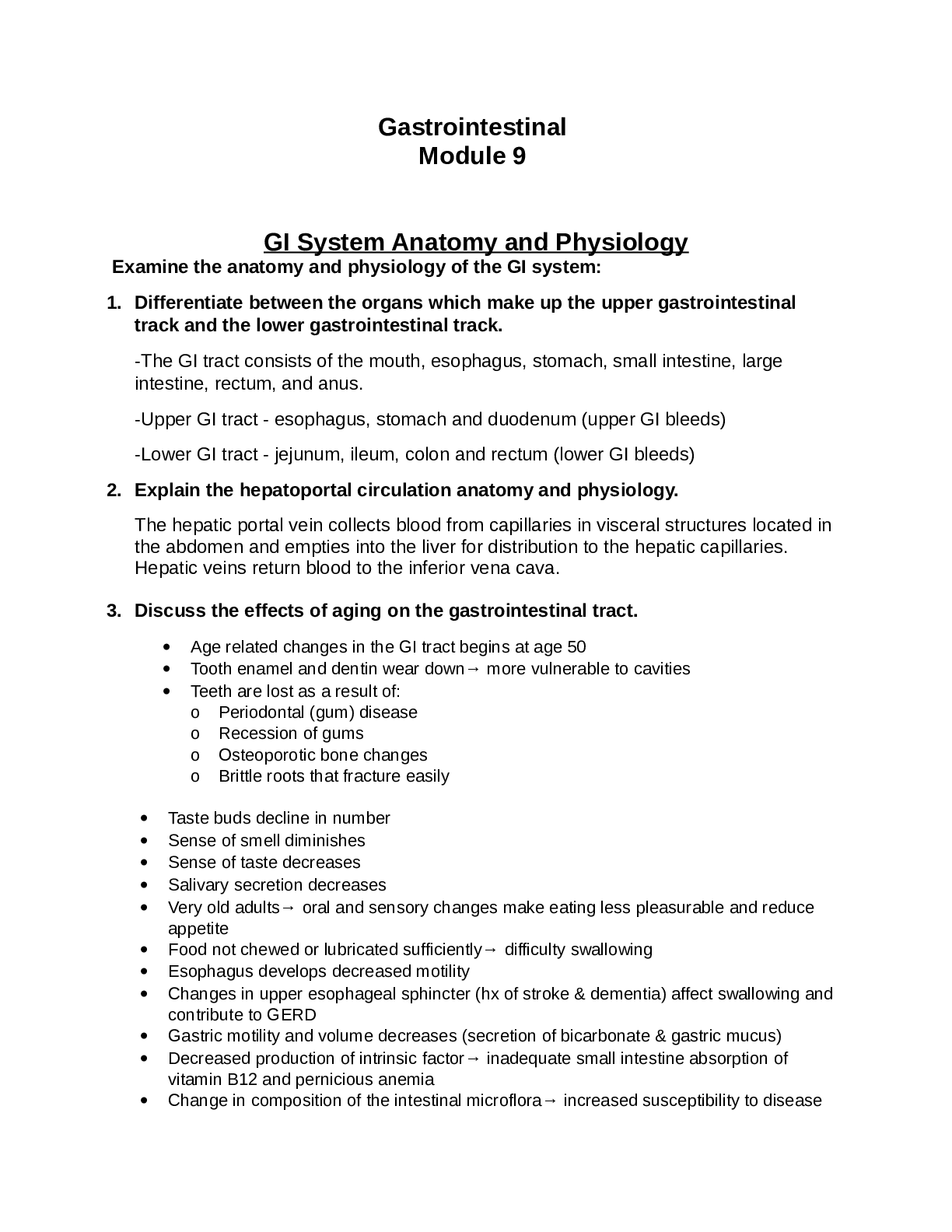
Buy this document to get the full access instantly
Instant Download Access after purchase
Buy NowInstant download
We Accept:

Reviews( 0 )
$12.00
Can't find what you want? Try our AI powered Search
Document information
Connected school, study & course
About the document
Uploaded On
Sep 04, 2021
Number of pages
25
Written in
Additional information
This document has been written for:
Uploaded
Sep 04, 2021
Downloads
0
Views
106








